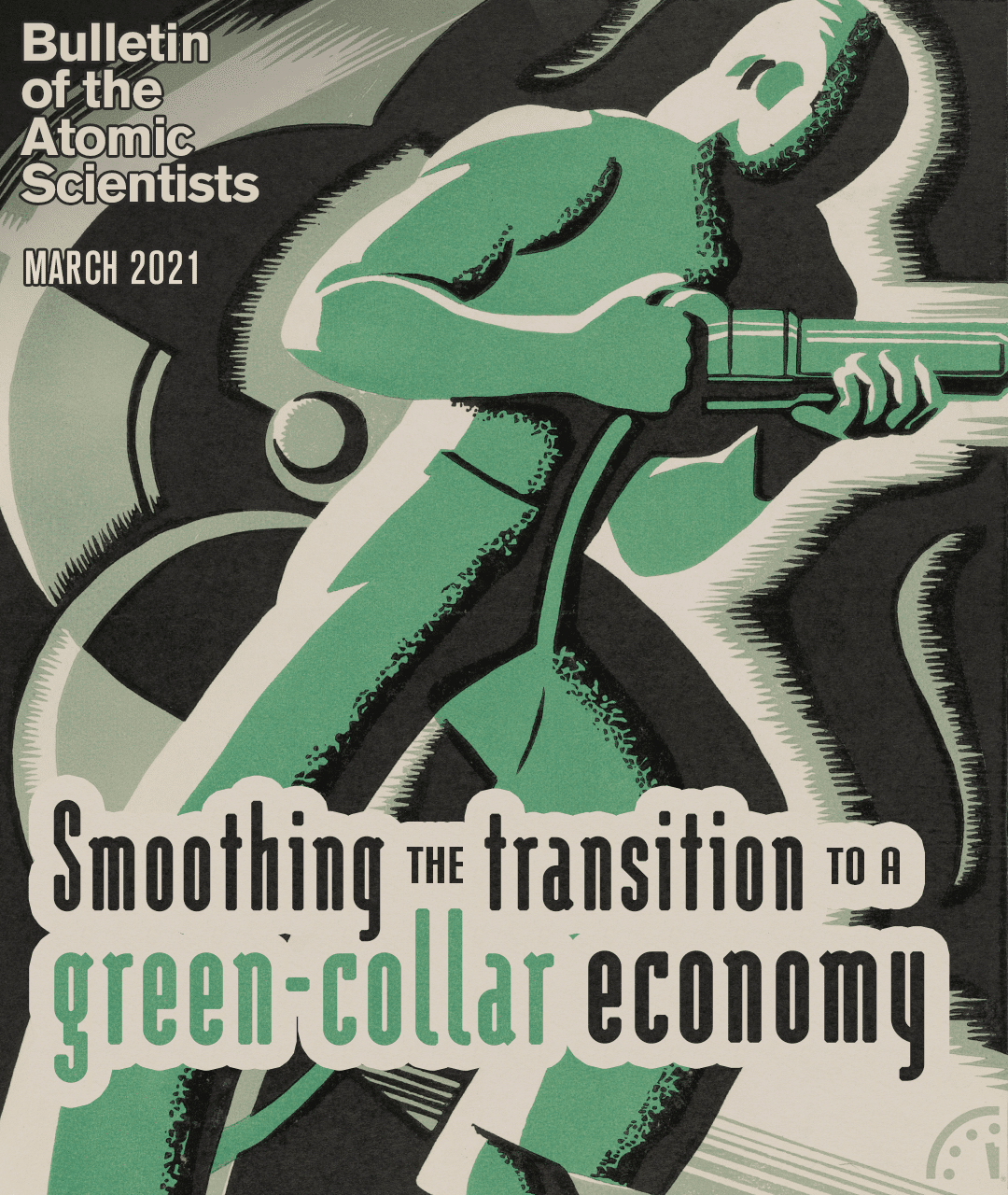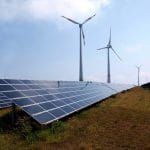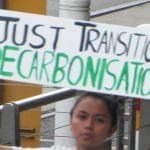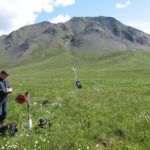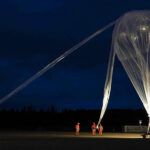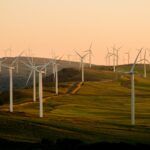Tom Steyer on clean energy: It’s where the big money is going
By Dan Drollette Jr | March 15, 2021
Tom Steyer on clean energy: It’s where the big money is going
By Dan Drollette Jr | March 15, 2021
For the better part of two years, wealthy investor and philanthropist Tom Steyer was on the presidential campaign trail, making the case among voters for his signature issue: climate change. The California native, who founded NextGen America, made transitioning from fossil fuels to a green economy the cornerstone of his presidential campaign and said that if elected, he would get action on climate change in the first 100 days of getting into office. Though Steyer ultimately withdrew from the campaign, his words seem to be echoed by our new president Joe Biden, who has made climate change a priority for his administration on a similar time frame—even before taking the oath of office.
In this interview with the Bulletin’s Dan Drollette Jr., Steyer talks about how to make the transition just for workers, companies, and governments—and, speaking as a billionaire, what he thinks the private sector can do.
This interview was conducted on the same day that the Senate races were called, giving the Democratic Party control of Congress and ensuring that Biden had at least some hope of enacting his climate legislation.
It should probably also be noted that at the same time this interview was being conducted, a mob was marching down Pennsylvania Avenue from the White House toward the Capitol—though we didn’t know it at the time. By the time the interview was finished, headlines had just started to appear saying that the Capitol had been invaded. Five people would be killed, about 140 police officers injured (estimates vary), an unknown number of rioters and bystanders wounded, and Senators and members of the House evacuated.
(Editor’s note: This interview has been condensed and edited for brevity and clarity.)
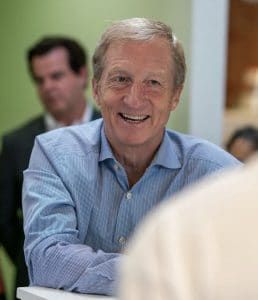
Steyer: Let me just say that with the two victories in the Senate races in Georgia earlier today, I really feel like we’ve turned the page on this failed Trump administration and all of its supporters and followers. I really feel as if this is a bright new day for America.
Drollette: Though I guess some political commentators are still a bit pessimistic about what those Senate victories might mean for dealing with climate change. One pundit on fivethirtyeight.com, Nathaniel Rakich, wrote: “I don’t think much suddenly becomes possible… A 50-50 Senate would have trouble passing relatively popular Democratic proposals like election reform, let alone progressive priorities like the Green New Deal.” He went on to say that just one conservative-leaning Democratic Senator—like West Virginia Sen. Joe Manchin—could hold the Biden agenda hostage. Do you think that’s overly pessimistic?
Steyer: This administration ran on a very exciting and necessary climate plan. I think they built a coalition and there’s a ton of support for it, pretty much across the board. That includes environmental justice people, union leaders, business leaders, and young people, specifically.
The election of the Biden-Harris team has pretty much ended the question about whether we should be doing a huge climate plan; it’s now just a question of exactly what the details are: How do we execute it? What does it really look like, and how do we get the private sector to buy in 100 percent? Because ultimately this will be executed by private companies and individuals across this country. But still, I’m very excited about it.
Drollette: What do you think that the private sector and philanthropy can do?
Steyer: Well, first of all, I think it’s much more about the private sector than anything else. I think if you look at what it means to have clean energy generation, that’s going to be done by the private sector: Companies are going to be executing it, companies are going to be rebuilding things like the electrical grid, and companies are going to be the ones figuring out how to do offshore wind.
There’s a huge amount involved in the execution there.
And let’s be clear, we’re in an international competition, and we’re behind. If we don’t pull together as a country, if American business doesn’t get behind this and really lead—and win—then things are going to be very hard on American working people in terms of lost job opportunities and the level of wages in this country.
It is also absolutely critical that private enterprise buy in, go hard, and that we win internationally. Because we absolutely can’t afford to lose this race with the countries which have already started to address it, like China and the nations of Europe.
Drollette: One thing that I’ve noticed in the time since I’ve started covering renewables is how quickly things are scaling up. For example, the number and size of offshore wind farms off of the New England coast (Drollette 2019) that are being built by Danish companies like Ørsted, Danish Oil and Natural Gas, and Copenhagen Infrastructure Partners keep going up; there’s now 28 offshore wind projects in the works off the East Coast (Energy.gov 2017). And the amount of clean energy that Massachusetts alone wants to contract to buy from them keeps going up; there’s a proposal before the governor right now, to double the amount of renewable energy that Massachusetts purchases. And already my home state has shut down all its coal-fired electricity generating plants—and decommissioned all its nuclear power plants (Lochbaum 2014).
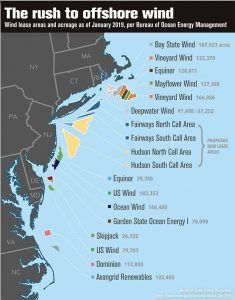
Steyer: If you really look at some of the opportunities here, they’re gigantic. Is there an execution factor in building far-out-to-sea huge wind turbines that are floating on the ocean, that need to systematically and safely get that clean energy back to shore? Yes. But a lot of the technology is already out there; these offshore wind farms simply repurpose a lot of the same technology that people have used in oil drilling offshore.
My point is that we need American companies to get on board.
Look, we have the best companies in the world, but they have to go after this and win, and they need to be supported. We’re going to have to use new technologies. We’re going to have to be creative. This is going to be a challenge that we’re going to have to meet together. And if it doesn’t happen, that’s going to be devastating for American jobs.
This is something I’ve been working on in California, in terms of advising the state on jobs and economic recovery. I started a nonprofit organization of businesses called Advanced Energy Economy about eight years ago, to promote the idea that clean energy is a way to create a lot of good jobs and for America to win. Pushed it with [former US Treasury Secretary] Hank Paulson and [businessman and former New York City mayor] Mike Bloomberg, and later published our findings in the Risky Business project report (Duane, Koomey, Belyeu and Hausker 2016). For a long time we have been saying: “This is a business thing. We need to pull business in. The National Chamber of Commerce needs to get behind this; the Business Roundtable needs to get behind this.” I think they’re absolutely ready to.
Drollette: A physicist from Oxford University, Raymond Pierrehumbert, once wrote a piece for the Bulletin that essentially said that there’s nothing to be afraid of, when it comes to transitioning to a green economy. He says it’s just another engineering problem, and that we’ve dealt with bigger engineering problems before. His exact words were: “It’s time to roll up our sleeves and just do it” (Pierrehumbert 2016). Which I thought was an interesting way of putting the situation.
Steyer: Well, yes, I think we have the technology to solve much of this now, and I think we will get more and better technology and engineering breakthroughs that will make it better than we know. I think that’s been the history of this.
But I think we should be afraid about what happens if we don’t get moving soon. I mean, there is an urgency here. If you look at the news from the natural world in 2020, it’s scary.
I am scared of some of these feedback loops—such as all that permafrost melting, essentially setting off that so-called “methane bomb” in the Arctic (Zaelke 2019). So, getting it right, and getting it right now, is incredibly important. We don’t want to get to a place where we’ve triggered things that are hard to control.
And that’s just one example. There are several of them. We just can’t go there. There’s a time pressure on us. I think the Biden-Harris campaign ran on dealing with the problem; they’ve put together a really good team. We need American business—and businesses around the world—to get behind this to make it happen.
Drollette: What specifically does government need to do to make that happen—to encourage business to get on board? Is it subsidies…
Steyer: Government needs to set the framework for business to act. And that means, in effect, make sure that the incentives are aligned between what’s necessary for the American people and what’s good for American business. That’s government’s job. I think that’s something that this team is very aware of, and is going to push for really hard: We need business to come together fast and make this happen.
Drollette: What about the time frame? On the campaign trail, you were saying that change needs to come fast, within the first 100 days or so. But given the current House and Senate situation, do you think that’s still…
Steyer: I think we’re really in a different situation today than we were just yesterday. It’s just a simple fact.
And from talking to Joe Biden and listening to what he has said all the time, he has a real sense of urgency around this. I think that this administration will have a real sense of what the move to a more green economy is going to mean domestically, and what it’s going to mean for job creation—at a time when we have very high unemployment. This is a classic time for government to step up, and to create the framework. The plan that they put forward is a huge work program for Americans—unionized work—across the country, for good-paying jobs. I think that there’s going to be an incredible sense of urgency to get done what has to get done and to set up a framework for American business to succeed and to lead. That is what we have to do. That is not where we are now, if you look systematically across the sectors of clean energy, manufacturing, and production.
Drollette: From what I can see, it sounds like they’ve got a pretty decent-looking climate cabinet: John Kerry, who actually signed the Paris Agreement on climate climate on behalf of the United States, is going to be the first member of the National Security Council to focus on climate change exclusively. I think it’s the first time this country has had a so-called “climate czar” at that level. (Lustgarten 2020).
Steyer: I think they’ve put together a really good team.
Drollette: This might be a loaded question, but do you think there is room for you on that team somewhere?
Steyer: Look, I am going to be a voice for racial justice and climate action, for the need for jobs and an economic recovery through climate action. I am going to be pushing for that really hard. I think we were on a crusade for a long time, maybe at least a decade for me, of trying to make sure that we get the proper attention given to climate change.
I think now the question is going to be, are we going to get the kind of climate action that will succeed in the real world—and succeed both in dealing with this crisis, but also answer the questions about racial justice, economic inequality, the deep issues that interact with climate, are connected with climate, and which any solution has got to deal with in an interconnected way.
Drollette: You know, I don’t think I’ve ever spoken to any billionaires before. But I’m going to go out on a limb here, and say that from reading the press, I get the impression that you—and maybe Bloomberg—have been pretty much alone out there among your peers, in terms of wanting to really take on climate change.
Steyer: I think business people across the board are coming around on this. No question about that. This is not even a Democratic issue, or a progressive issue anymore. I’ll give you some names: Jeff Bezos, Bill Gates, Hank Paulson, Jamie Dimon [CEO of JP Morgan]. I could keep going. A long, long, long, long list. I wouldn’t say it’s 100 percent, but the overwhelming number of famous, big businessmen—including ones who are super wealthy—have realized this is something we absolutely have to do.
Don’t get me wrong, I think it’s super-important that businesses feel that their incentives regarding climate change are aligned on a private enterprise basis with the needs of the American people and the needs of the world. But I think the business community is ready to move on this in a way they have never been ready before.
You can see it in terms of not only what they say, but how things get valued in the marketplace and where the big money is going. I don’t think there’s any question now that we’re here in terms of the business community being ready.
Drollette: That seems like a real sea change.
Steyer: It wasn’t true 10 years ago, I can tell you.
Drollette: Was there one particular “aha” moment that really got you interested in solutions to climate change? You’ve mentioned that figure of 10 years a couple of times.
Steyer: I just use 10 years because that’s how long I’ve been politically active. I ran a climate campaign in my home state of California back in 2010, called “No on 23,” which took on the oil companies over climate legislation (Woody 2010). I co-chaired the campaign with George Shultz, and we got 70 percent of the vote. We had a completely different way of talking about climate, a completely different coalition, a completely different sense of what we were doing, that involved both organized labor and the Chamber of Commerce. We did it completely differently; we talked about clean energy job creation, we talked about environmental justice, for what may have been one of the first times at the state-wide level in California.
And I guess that’s when things really accelerated for me.
But I think I really got interested in this probably a good five years before that, while sitting around the dinner table with my family and talking about what we’re getting wrong. We were wondering, what are the things that in 100 years people are going to look back and go, “What was wrong with these people?” The way we do with other societies and go like: “Can you believe it? They were so crazy.” We were sitting around the table and we decided it was climate—that was the threat to everything, that for some reason wasn’t getting dealt with.
So I basically went through a learning curve, a series of steps—starting with research, fundamental research, and engineering—in which I satisfied myself that clean energy is better for us from every perspective: in terms of the economy, jobs, and health, as well as from an environmental perspective. Then I realized that nobody was paying attention to any of that, and that this was a political issue. And that’s when I started to act politically.
Drollette: I remember a comment that you made at a town hall event in Concord, where you said that it is important to follow the science, pay attention to the facts, and let them inform your choices. (New Hampshire Youth Climate and Clean Energy Town Hall 2020).
Steyer: The point made by that Oxford physicist you mentioned is really true: We can do this.
And I believe we are choosing to do this. I think it’s absolutely critical that we all pull together in this, and I am very excited about that. More excited today than I was yesterday.
References
Drollette, D. 2019. “Tilting toward windmills.” Bulletin of the Atomic Scientists. September 18. https://thebulletin.org/tilting-toward-windmills/ ”
Duane, T., Koomey, J., Belyeu, K., and Hausker, K. 2016. “From Risk to Return: Investing in a Clean Energy Economy.” Risky Business Project.https://riskybusiness.org/site/assets/uploads/sites/5/2016/10/RiskyBusiness_FromRiskToReturn.pdf
Energy.gov. 2017. “Four Emerging Trends in US Offshore Wind Technologies.” Office of Energy Efficiency and Renewable Energy. August 9. https://www.energy.gov/eere/articles/4-emerging-trends-us-offshore-wind-technologies
Lochbaum, D. 2014. “Life after nuclear: Decommissioning power reactors.” Bulletin of the Atomic Scientists. July 1. https://doi.org/10.1177/0096340214539111
Lustgarten, A. 2020. “John Kerry, Biden’s Climate Czar, Talks About Saving the Planet.” ProPublica. December 18. https://www.propublica.org/article/john-kerry-biden-climate-czar
New Hampshire Youth Climate and Clean Energy Town Hall. 2020. “Recording of Town Hall.” Hubbard Brook Research Foundation. February 5. https://livestream.com/mfi/NHYouthClimate
Pierrehumbert, R. 2016. “How to decarbonize? Look to Sweden.” Bulletin of the Atomic Scientists. March 2. Vol. 72, No. 2, pp 105-111. https://www.tandfonline.com/doi/full/10.1080/00963402.2016.1145908
Rakich, N. 2020. “What Happened This Week in Washington—And Georgia.” FiveThirtyEight. January 5, 11:36 p.m. post, filed under 2020 Election. https://fivethirtyeight.com/live-blog/georgia-senate-election-results/#300442
Woody, T. 2010. “No on Prop 23 campaign rakes in cashas enviro justice advocates join the fight.” September 28. Grist. https://grist.org/article/no-on-prop-23-campaign-rakes-in-cash-as-enviro-justice-advocates-join-the-f/
Zaelke, D. 2019. “How to save the Arctic’s moderating role on global warming.” Bulletin of the Atomic Scientists. April 1. https://thebulletin.org/2019/04/how-to-save-the-arctics-moderating-role-on-global-warming/
Together, we make the world safer.
The Bulletin elevates expert voices above the noise. But as an independent nonprofit organization, our operations depend on the support of readers like you. Help us continue to deliver quality journalism that holds leaders accountable. Your support of our work at any level is important. In return, we promise our coverage will be understandable, influential, vigilant, solution-oriented, and fair-minded. Together we can make a difference.
Keywords: Tom Steyer, climate change, climate policy, energy, fossil fuels, green economy, renewables, transition
Topics: Climate Change

